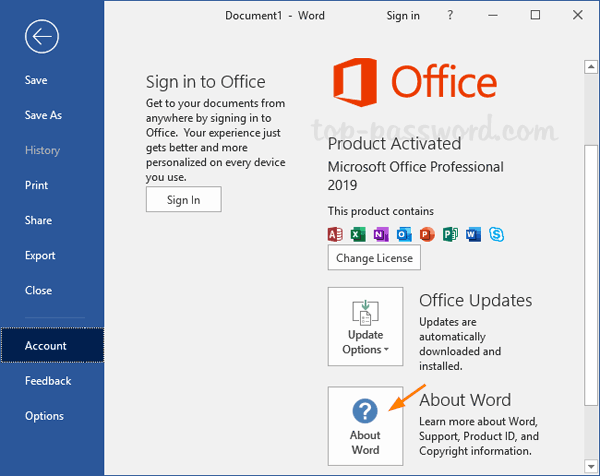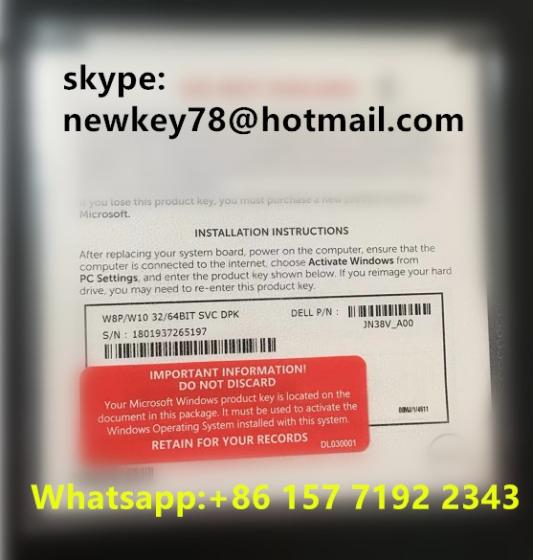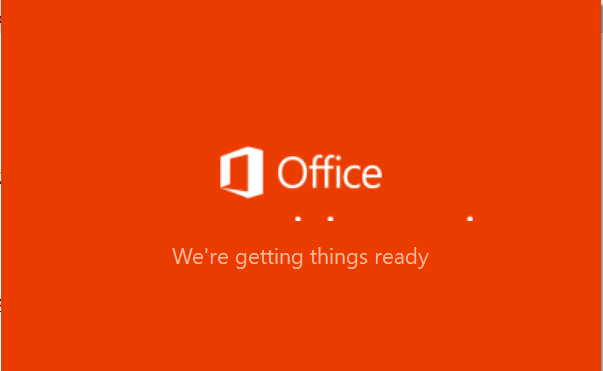Office 2019 Can Install On Windows 7
-->
Project 2019, Visio 2019, Access 2019, and Publisher 2019 are for Windows only. Office 2019 customers will get access to OneNote. For more details, see here. Compatible with Windows 10 or later. For complete requirements for PC and Mac, see system requirements. This plan works with Office 2019, Office 2016, and Office 2013.
In many cases, you can install Office, Project, and Visio on the same computer. But, there are some combinations of Office, Project, and Visio that can't be installed together on the same computer.The two main things that determine whether Office, Project, and Visio can be installed together on the same computer are the version of the product and the installation technology used to install the product. What governs whether an installation scenario is supported are these two rules:
- You can't install two products together that have the same version but use different installation technologies.
- You can't install two products of different versions together if both products use Click-to-Run as the installation technology and those products have overlapping Office applications.
- With Office 2019, Microsoft has changed the way Volume Licensing customers can download and install all Office suites and individual applications, including Visio and Project. Unlike previous editions of Office that were obtained through Volume Licensing, Office 2019 products can't be downloaded directly through the Volume Licensing Service.
- Oct 10, 2018 Actually, Office 2019 works just fine on both 7 and 8.1. Since Office 2019 shares the same version files as Office 2016 and 365 (which both work on 7 and 8.1), you need to circumvent the artificial block. It just requires a bit of work with some hidden executable.
- Tech support scams are an industry-wide issue where scammers trick you into paying for unnecessary technical support services. You can help protect yourself from scammers by verifying that the contact is a Microsoft Agent or Microsoft Employee and that the phone number is an official Microsoft global customer service number.
See the example installation scenarios section for several examples of installation scenarios that are supported and not supported, along with an explanation of why they are or aren't supported, based on the rules listed above.
Office releases and their version number
The following table shows Office releases that are currently supported by Microsoft, their associated version, and all the possible installation technology. The information listed in the table also applies to releases of Project and Visio. For example, the subscription version of the Project desktop app or Visio Professional 2016.
| Office release | Version | Installation technologies |
|---|---|---|
| Office 365 (and Microsoft 365) | 16.0 | Click-to-Run Microsoft Store |
| Office 2019 | 16.0 | Click-to-Run Microsoft Store |
| Office 2016 | 16.0 | Click-to-Run Windows Installer (MSI) Microsoft Store |
| Office 2013 | 15.0 | Click-to-Run Windows Installer (MSI) |
You can find this version information by going to Control Panel > Programs > Programs and Features. You can also find this version in the About dialog for the Office app. For example, open Word, and go to File > Account > About Word. On the top line of the About Microsoft Word dialog box, you will see the version number. For example, Microsoft Word 2019 MSO (16.0.10336.20044) 32-bit. For steps to find this version in different Office releases, see Find details for other versions of Office.
Note
- Office 365, Microsoft 365, Office 2019, and Office 2016 all have the same version: 16.0
- Office 2010, which is no longer supported, had a version of 14.0 and used Windows Installer (MSI) as the installation technology.
Installation technologies used by Office
There are different ways to purchase Office, Project, and Visio. For example, you can purchase them as part of an Office 365 (or Microsoft 365) plan, as a one-time purchase from a retail store, or through a volume licensing agreement. How you purchase them, along with which Office release you purchased – for example, Office 365 or Office 2016 – determines what installation technology is used to install Office.
The three installation technologies are:
- Click-to-Run
- Windows Installer (MSI)
- Microsoft Store
In newer releases of Office, you can go to File > Account in any Office app, such as Word, and the type of installation technology is listed under the Product Information section.
Another way to tell which installation technology was used to install Office is to File > Account in any Office app. Under the Product Information section, if you see an Update Options choice, Office was installed by using Click-to-Run. If you don't see an Update Options choice, and you don't see any mention of Microsoft Store, then Office was installed by using Windows Installer (MSI).
The Microsoft Store installation technology is only used when you purchase and install Office from the online Microsoft Store.
You can't rely on just the product name and release to determine the installation technology used by Office. For example, if you purchase Visio Standard 2016 from a retail store, it uses Click-to-Run. But, if you purchase Visio Standard 2016 through a volume licensing agreement, it uses Windows Installer (MSI).
Example installation scenarios
Here are some example installation scenarios, whether they're supported, and an explanation of why they are or aren't supported.
| Products to install | Supported? | Explanation |
|---|---|---|
| Microsoft 365 Apps Project Professional 2013 (volume licensed) | Yes | They use different installation technologies (Click-to-Run and MSI) and they are different versions (16.0 and 15.0) |
| Microsoft 365 Apps Access 2013 (retail purchase) | No | They both use Click-to-Run and they are different versions (16.0 and 15.0), but Microsoft 365 Apps already includes Access. |
| Microsoft 365 Apps Visio Professional 2013 (retail purchase) | Yes | They both use Click-to-Run, they are different versions (16.0 and 15.0), and there is no overlap in applications. |
| Office Professional Plus 2019 (volume licensed) Visio Professional 2016 (volume licensed) | No, but there is an alternative installation method available. | They use different installation technologies (Click-to-Run and MSI), but they are the same version (16.0). For more information about the alternative installation method that's available, see Use the Office Deployment Tool to install volume licensed versions of Project 2016 and Visio 2016. |
| Office Standard 2019 (volume licensed) Visio Standard 2013 (volume licensed) | Yes | They use different installation technologies (Click-to-Run and MSI) and they are different versions (16.0 and 15.0). |
| Microsoft 365 Apps Visio Professional 2016 (volume licensed) | No, but there is an alternative installation method available. | They use different installation technologies (Click-to-Run and MSI), but they are the same version (16.0). For more information about the alternative installation method that's available, see Use the Office Deployment Tool to install volume licensed versions of Project 2016 and Visio 2016. |
| Microsoft 365 Apps Project Professional 2019 (volume licensed) | Yes, but with a caveat. 1 | They both use Click-to-Run and are the same version (16.0). |
| Microsoft 365 Apps Visio Standard 2019 (retail) | Yes, but with a caveat. 1 | They both use Click-to-Run and are the same version (16.0). |
1 You must be using at least Version 1808 of Microsoft 365 Apps, because that's the earliest version that recognizes Office 2019 products, including Project and Visio. Version 1808 or later is available in Current Channel, Monthly Enterprise Channel, Semi-Annual Enterprise Channel (Preview), and Semi-Annual Enterprise Channel. For Microsoft 365 Apps release information, see Update history for Microsoft 365 Apps.
Additional information
- All installed products must be either the 32-bit version or the 64-bit version. For example, you can't install a 32-bit version of Visio on the same computer with a 64-bit version of Office.
- Even though a particular installation scenario is supported, it might not be recommended. For example, we don't recommend having two different versions of Office installed on the same computer, such as Office 2013 (MSI) and Office 2019 (Click-to-Run).
- Volume licensed versions of Office 2013 and Office 2016 use Windows Installer (MSI). Volume licensed versions of Office 2019 use Click-to-Run. The same is true for volume licensed versions of Project and Visio.
- For Office 365, Microsoft 365, and Office 2019 products, all products installed on the computer must be using the same update channel. For example, the volume licensed version of Office Professional Plus 2019 can only use the PerpetualVL2019 update channel. Therefore, it can't be installed on the same computer that has the subscription version of the Project desktop app using Semi-Annual Enterprise Channel or on the same computer that has the subscription version of the Visio desktop app using Current Channel.
Related articles
-->Important

- Support for Windows 7 ended on January 14, 2020. Learn more
- Microsoft 365 Apps is no longer supported on Windows 7.
- If you're a home user running Office on Windows 7, see Windows 7 end of support and Office instead of reading this article.
Office 365 and Microsoft 365 are governed by the Modern Lifecycle Policy, which requires customers to stay current as per the servicing and system requirements for the product or service. This includes using Microsoft 365 Apps on a Windows operating system that is currently in support.
Using Microsoft 365 Apps on older, unsupported operating systems may cause performance and reliability issues over time. Therefore, if your organization is using Microsoft 365 Apps on devices running Windows 7, we strongly recommend your organization moves those devices to Windows 10.
Office 2019 Can Install On Windows 7 Bootable



Security updates will continue for Microsoft 365 Apps on Windows 7
Even though Windows 7 is no longer supported, we've decided to continue to provide you with security updates for Microsoft 365 Apps for the next 3 years, until January 2023. We're doing this to give you additional time to make the transition from using Microsoft 365 Apps on devices running Windows 7 to devices running a supported operating system, such as Windows 10. But, during that time, as long as the device is still running Windows 7, your installation of Microsoft 365 Apps won't receive any new features updates.
Important
- Even with these security updates, Microsoft 365 Apps is no longer supported on Windows 7.
- This information applies even if you have purchased Extended Security Updates (ESU) for Windows 7. After January 2020, security updates for Windows 7 are only available with ESU. For more information, see FAQ about Extended Security Updates for Windows 7.
How to manage Microsoft 365 Apps on Windows 7 after January 2020
Version 2002 is the last version of Microsoft 365 Apps that you can install on devices running Windows 7. Version 2002 is available in Current Channel, Semi-Annual Enterprise Channel (Preview), and Semi-Annual Enterprise Channel.
This means that if you want to continue to deploy and update Microsoft 365 Apps on devices that are running Windows 7, you need to use Version 2002. If you try to install a newer version of Microsoft 365 Apps, such as Version 2005, on a device running Windows 7, you'll receive an error message.
Note
You can continue to use a version of Microsoft 365 Apps earlier than Version 2002 on devices running Windows 7 if that version is still available. For example, you can continue to use Version 1908 of Semi-Annual Enterprise Channel until March 2021. To see the version available in each update channel of Microsoft 365 Apps, refer to the table in Update history for Microsoft 365 Apps.
To deploy or update Version 2002 on devices running Windows 7, you can keep using the same management tools that you're currently using, such as the Office Deployment Tool or Microsoft Endpoint Configuration Manager. Also, Microsoft 365 Apps can remain on the same update channel as before.
If Microsoft 365 Apps is configured to get updates directly from the Office Content Delivery Network (CDN) on the internet, Microsoft 365 Apps on devices running Windows 7 will be updated automatically to the most current release of Version 2002 for that update channel.
Guidance when using Configuration Manager for updates
Office 2019 Can Install On Windows 7 Iso
If you use Configuration Manager and the Software Update management workflow to update installations of Microsoft 365 Apps, we recommend that you create a separate collection for your Windows 7 devices. Then, use a query rule to add members to the collection.
On the 2nd Tuesday of each month, a new update package for Version 2002 that is only for devices running Windows 7 will be made available in the Microsoft Update Catalog. There will be an update package for each architecture (x86 or x64). That update package can be used with whichever update channel of Microsoft 365 Apps you have deployed. There won't be separate update packages of Version 2002 for each update channel. For example, the same update package can be used to update a Current Channel or a Semi-Annual Enterprise Channel installation of Microsoft 365 Apps on devices running Windows 7.

In the Office 365 Updates node, you'll see entries like the following, where ##### will be replaced by the most current build number:
- Microsoft 365 Apps Update for Windows 7 – Version 2002 for x64 based Edition (Build 12527.#####)
- Microsoft 365 Apps Update for Windows 7 – Version 2002 for x86 based Edition (Build 12527.#####)
These update packages are configured to apply only to devices running Windows 7. These update packages can't be used to update Microsoft 365 Apps on devices running other supported operating systems, such as Windows 10.
If you use an automatic deployment rule (ADR), you should create a new rule for these update packages. Then, use the new rule for your collection that contains your Windows 7 devices. We recommend using the 'Title' property and searching for 'Microsoft 365 Apps Update for Windows 7' as well as the architecture you support. If you support both x86 and x64, you can include both updates in one Software Update Package as clients will apply the appropriate update. You should also check other existing ADRs to make sure they don't incorrectly try to apply these update packages, which are only for devices running Windows 7, to devices running other operating systems.
Extended availability of Version 2002
Version 2002 will be available until January 2023 and will receive security updates, as needed, during that time. For a list of security updates included in releases of Version 2002, see Release notes for Microsoft 365 Apps Security Updates.
Office 2019 For Windows 7
Versions of Semi-Annual Enterprise Channel are available usually for only 14 months, but we're making an exception for Version 2002 in order to align with the availability dates of Windows 7 ESU. This extended availability for Version 2002 also applies to other update channels, such as Current Channel and Semi-Annual Enterprise Channel (Preview).
The extended availability of Version 2002 until January 2023 applies only to devices running Windows 7.
After moving Microsoft 365 Apps to a supported Windows operating system
After you move Microsoft 365 Apps to a supported Windows operating system, you can configure Microsoft 365 Apps to begin receiving newer versions and feature updates again. Since updates for Microsoft 365 Apps are cumulative, you'll receive all the feature updates that you missed while your device was running Windows 7.
If you're getting updates directly from the Office CDN on the internet, after the device is moved to a supported operating system, Microsoft 365 Apps will be updated automatically to the most current version available for that update channel and will start receiving new features again.
What about other versions of Office on Windows 7?
Office 2019 Will Not Install On Windows 7
Non-subscription versions of Office used by organizations, such as Office Professional Plus 2016 or Office Standard 2013, will continue to be supported based on the Fixed Lifecycle Policy. To see specific end of support dates for non-subscription versions of Office, go to Search Product and Services Lifecycle Information.
Office 2019 Can Install On Windows 7 Bootable
Even if your version of Office is still supported, Windows 7 will no longer receive security updates after January 2020, leaving it vulnerable to security threats, unless you have ESU. We recommend that you move to a supported operating system, such as Windows 10.
Additional information
- This information also applies to the following products:
- The subscription versions of the Project and Visio desktop apps. For example, if you have Project Plan 5 or Visio Plan 2.
- Microsoft 365 Apps for business (previously named Office 365 Business), which is the version of Office that comes with some Microsoft 365 business plans, such as Microsoft 365 Business Premium.
- For information about Windows Server 2008 R2, see Windows Server end of support and Microsoft 365 Apps.
- For end of support dates for different versions of Office on various versions of Windows, see the Office configuration support matrix.
- Other Microsoft resources are available to help you make the transition to using Microsoft 365 Apps on devices running Windows 10, including FastTrack and App Assure.
- To discuss or learn more about end of support for Office versions, visit Microsoft Office End of Support on the Microsoft Tech Community.
- If you're using Microsoft 365 Apps for enterprise on a device running Windows 7 or Windows Server 2008 R2, you'll continue to see Office 365 ProPlus under the Product Information section when you go to File > Account in an Office app, such as Word. If you're using Version 2002 of Microsoft 365 Apps for business, you'll see Microsoft 365 for business under the Product Information section.